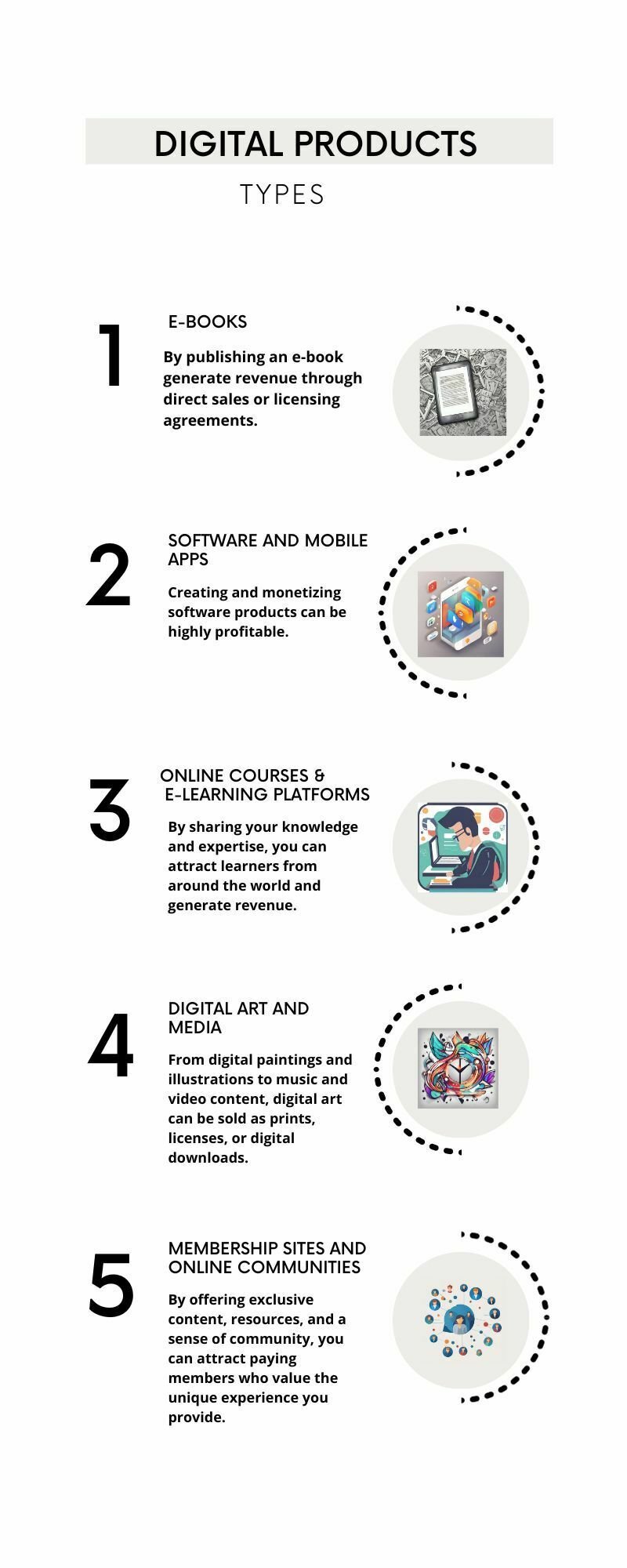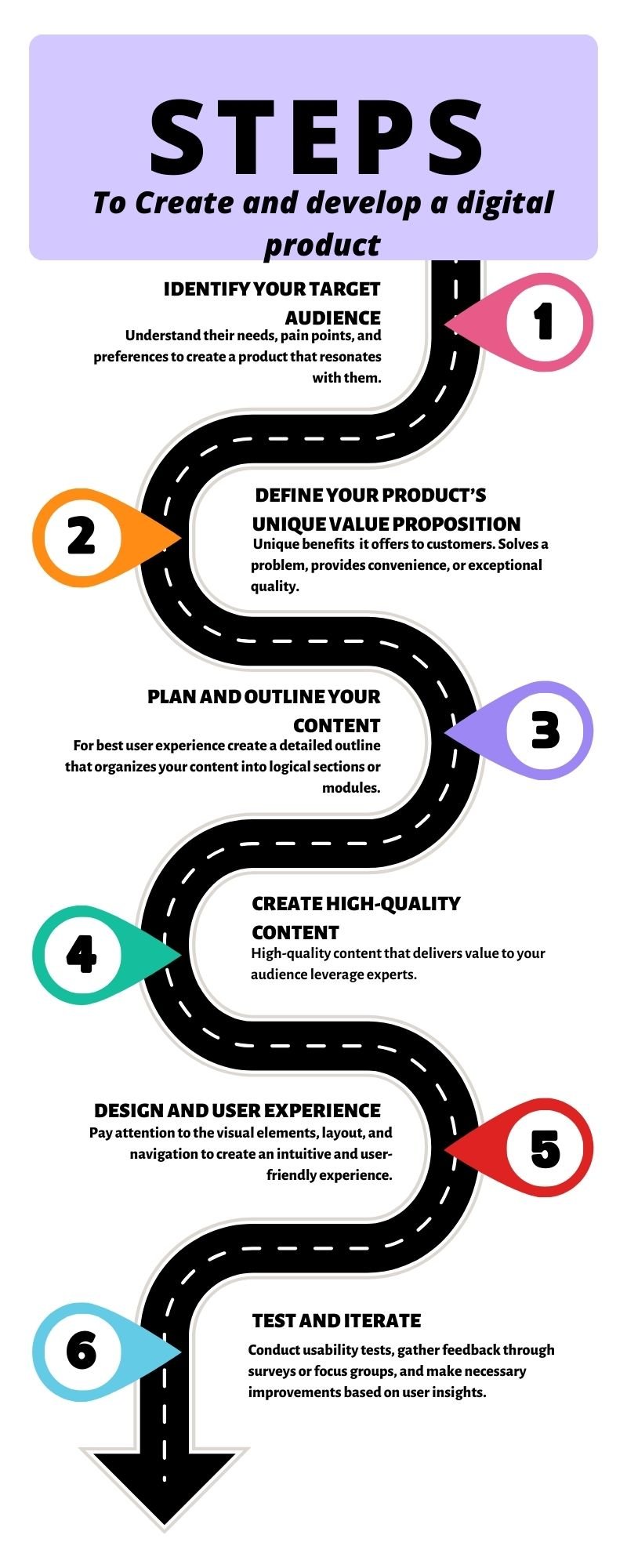
In the ever-evolving digital landscape, the way we consume content and products has drastically transformed. From the advent of eBooks to the rise of streaming services, the digital realm has opened up endless possibilities for consumers and businesses alike. In this article, we will delve into the fascinating journey of digital products and the impact they have had on our lives.
The shift from physical to digital products has been seismic, with eBooks paving the way for a new era of reading. The convenience and portability of eBooks have allowed readers to access their favorite titles anytime, anywhere. However, the transformation didn’t stop there. The introduction of streaming services revolutionized how we entertain ourselves, with platforms like Netflix and Spotify giving us access to an expansive library of movies, TV shows, and music at our fingertips.
Join us as we trace the evolution of digital products, exploring the benefits they bring, the challenges they present, and the future they hold. From enhanced accessibility and convenience to the democratization of content, these digital offerings have truly reshaped the way we live and interact with the world around us. Get ready to embark on a journey through the transformative power of digital products.
The rise of eBooks and their impact on the publishing industry
The shift from physical to digital products has been seismic, with eBooks paving the way for a new era of reading. The convenience and portability of eBooks have allowed readers to access their favorite titles anytime, anywhere.
With the introduction of e-readers like Amazon’s Kindle, the publishing industry experienced a massive shift. Suddenly, readers had access to an extensive library of books at their fingertips, without the need for physical storage or cumbersome bookshelves. This digital revolution democratized the publishing industry, allowing independent authors to self-publish their work and reach a global audience.
However, the rise of eBooks also presented challenges for traditional publishers and bookstores. Many brick-and-mortar bookshops struggled to compete with the convenience and lower prices offered by digital platforms. Despite this, the eBook industry continues to thrive, with new digital reading devices constantly pushing the boundaries of what’s possible.
The emergence of streaming services and their effect on the entertainment industry
The transformation didn’t stop with eBooks. The introduction of streaming services revolutionized how we entertain ourselves, with platforms like Netflix and Spotify giving us access to an expansive library of movies, TV shows, and music at our fingertips.
Streaming services disrupted the traditional model of purchasing physical copies of movies and albums. Instead, consumers can now stream their favorite content on-demand, eliminating the need for physical media and storage space. This shift has not only changed the way we consume entertainment but has also revolutionized the way content is produced and distributed.
Streaming services have also given rise to a new era of content creation. With platforms like YouTube and Twitch, anyone can become a content creator and share their videos or live streams with a global audience. This democratization of content has opened up new opportunities for aspiring filmmakers, musicians, and artists.
The evolution of digital products in the music industry
The music industry has experienced a significant transformation due to the rise of digital products. Gone are the days of purchasing CDs or vinyl records. Instead, consumers now have access to millions of songs through streaming platforms like Spotify and Apple Music.
The shift to digital music has allowed for greater accessibility and convenience. With just a few clicks, listeners can discover new artists, create personalized playlists, and enjoy their favorite songs on the go. This shift has also had a profound impact on the way musicians distribute and promote their music. Independent artists now have the opportunity to reach a global audience without the need for a record label or physical distribution.
However, the transition to digital music has also presented challenges for artists and the industry as a whole. With the rise of streaming platforms, artists often face lower royalty rates compared to traditional album sales. This has led to debates around fair compensation for artists and the sustainability of the music industry.
The growth of digital products in the gaming industry
The gaming industry has experienced a digital revolution of its own. Gone are the days of purchasing physical copies of video games. Now, gamers can access a vast library of titles through digital platforms like Steam, PlayStation Network, and Xbox Live.
Digital distribution has not only made gaming more accessible but has also opened up new opportunities for independent game developers. With platforms like itch.io and the rise of crowdfunding, developers can now release their games directly to consumers without the need for a large publishing deal.
The shift to digital gaming has also brought about changes in game monetization models. While traditional games were often sold as a one-time purchase, many modern games now utilize free-to-play models with in-game purchases and microtransactions. This shift has sparked debates around the ethics of monetization and the impact on gameplay.
The impact of digital products on traditional retail
The rise of digital products has had a significant impact on traditional retail. With the convenience of online shopping, consumers can now purchase a wide range of products without leaving their homes. This shift has led to the decline of brick-and-mortar stores and the rise of e-commerce giants like Amazon.
While traditional retail still has its place, the growth of digital products has forced businesses to adapt. Many retailers now offer online platforms and digital services to meet the changing demands of consumers. This shift has also led to the rise of direct-to-consumer brands, cutting out the middleman and delivering products directly to the consumer’s doorstep.
The future of digital products and their potential in other industries
The evolution of digital products is not limited to the industries mentioned above. Digital products have the potential to disrupt and transform various industries, from education and healthcare to finance and transportation.
In the education sector, digital products like online courses and e-learning platforms have made education more accessible to people around the world. With the ability to learn anytime, anywhere, students can now acquire new skills and knowledge without the need for traditional classrooms.
In healthcare, digital products have the potential to revolutionize patient care and access to medical information. From telemedicine platforms that allow patients to consult with doctors remotely to wearable devices that track health data, the possibilities are endless.
The finance industry has also seen a surge in digital products, with online banking, mobile payment apps, and cryptocurrency becoming increasingly popular. These innovations have made financial transactions more convenient and have opened up new avenues for financial inclusion.
Challenges and opportunities in the digital product market
While the digital product market offers numerous opportunities, it also presents challenges for businesses and consumers alike. One of the significant challenges is ensuring data privacy and security. With the increasing reliance on digital platforms, protecting personal information and preventing data breaches has become more critical than ever.
Another challenge is the rapid pace of technological advancements. As new technologies emerge, businesses must adapt and stay ahead of the curve to remain competitive. This requires continuous innovation and the ability to embrace change.
Despite the challenges, the digital product market offers immense opportunities for businesses to connect with consumers and expand their reach. By leveraging digital platforms, businesses can reach a global audience, gather valuable data, and personalize the customer experience. The key to success lies in understanding the needs and preferences of consumers and delivering compelling digital products that meet those needs.
How to create and market your own digital product
Creating and marketing a successful digital product requires careful planning and execution. Here are some essential steps to consider:
1. Identify a problem or need: Start by identifying a problem or need that your digital product can solve. Conduct market research to understand your target audience and their pain points.
2. Develop your product: Once you have a clear understanding of your target audience and their needs, start developing your digital product. Whether it’s an app, an e-course, or a subscription-based service, focus on creating a product that delivers value and solves the identified problem.
3. Test and iterate: Before launching your product, gather feedback from your target audience through beta testing. This will help you identify any issues or areas for improvement. Iterate and refine your product based on the feedback received.
4. Create a marketing strategy: Develop a comprehensive marketing strategy to promote your digital product. This may include creating a website, leveraging social media platforms, running targeted ads, and reaching out to influencers in your industry.
5. Launch and measure success: Launch your digital product and monitor its performance. Track key metrics such as user engagement, conversion rates, and customer feedback. Use this data to make informed decisions and improve your product over time.
Conclusion
The journey of digital products, from eBooks to streaming services, has transformed the way we live, work, and entertain ourselves. The convenience, accessibility, and democratization brought by digital products have reshaped industries and opened up new opportunities for businesses and consumers alike.
As technology continues to evolve, the future of digital products holds immense potential. From education and healthcare to finance and beyond, digital products have the power to revolutionize various industries and enhance our lives in ways we never thought possible.
So, as we navigate this ever-changing digital landscape, let’s embrace the transformative power of digital products and explore the endless possibilities they bring. The future is digital, and it’s up to us to seize the opportunities and shape it to our advantage.
Thank you for joining us on this journey through the evolution of digital products.










